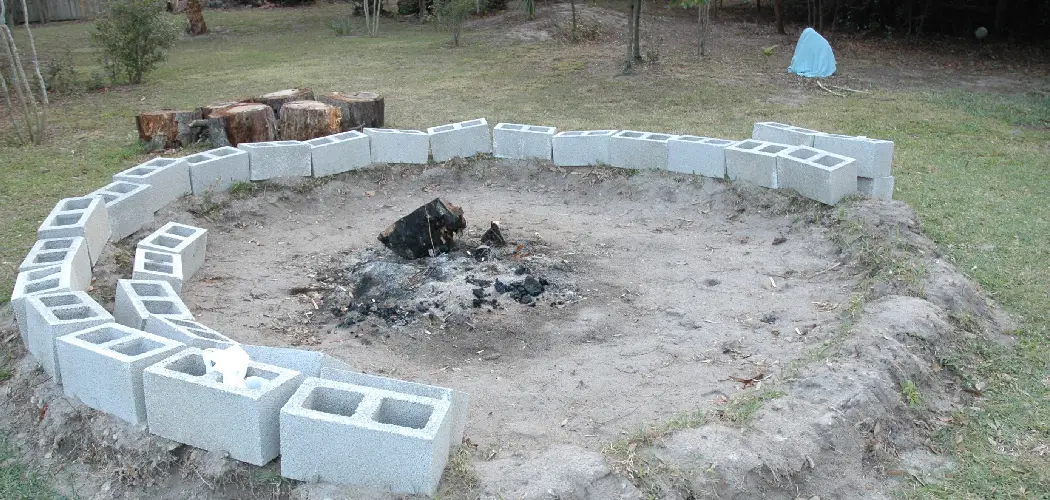Concrete is a very durable material that can withstand heat and pressure, but extreme temperatures can damage it. So, we need to find out how to Protect Concrete From Fire Pit. Fire pits are a great way to enjoy your outdoor space, but they can also cause significant damage to concrete if not properly protected. The intense heat of the fire pit can cause cracks to form in the concrete, leading to further damage over time.
Taking the proper steps to protect your concrete from fire pits can help to keep it in great condition for many years.
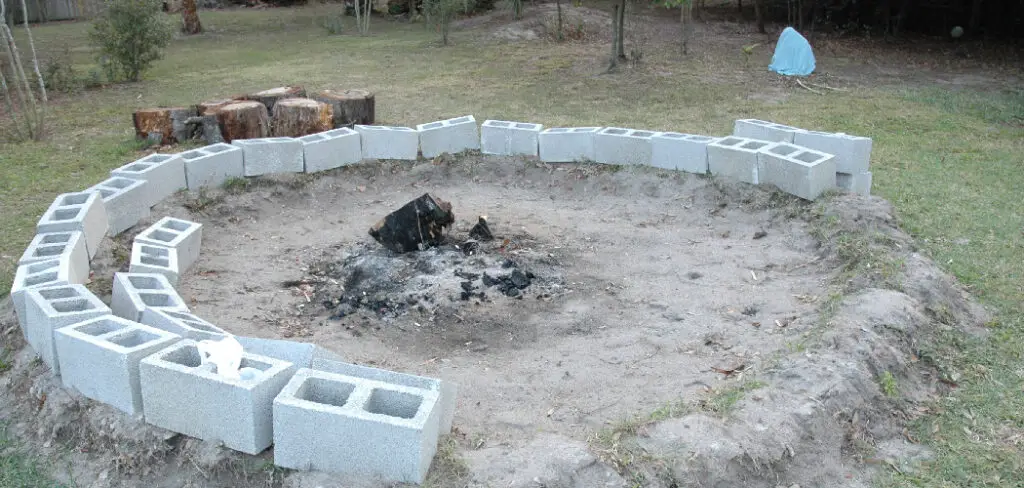
The primary advantage of protecting concrete from a fire pit is that it can help to extend the life of your patio or other outdoor area. Without proper protection, the intense heat and flames from a fire pit can cause significant damage to the concrete surface.
Not only does this damage make the area less attractive, but it also reduces its structural integrity and can lead to costly repairs or replacements. In this blog post, You will learn in detail how to protect concrete from fire pit.
Materials You Will Need
- Concrete sealer
- Fire retardant
- Heat resistant mortar
- Acid-resistant primer
- Polyurethane foam insulation
- Heat reflective paint
- Lava rock or other heat-absorbent material
- Protective cover for fire pit
- Fire-resistant bricks or stones
- A fireproof pad to place the fire pit on
Step-by-Step Processes for How to Protect Concrete From Fire Pit
Step 1: Inspect the Area
Before attempting to protect your concrete from a fire pit, it is important to inspect the area thoroughly. Check for any signs of damage or weak spots in the concrete that may be vulnerable to heat damage. Moving your fire pit away from any existing concrete can help decrease the amount of heat that is generated near the concrete.
When possible, place the fire pit on a non-flammable surface such as gravel or sand to further protect the concrete from heat damage.
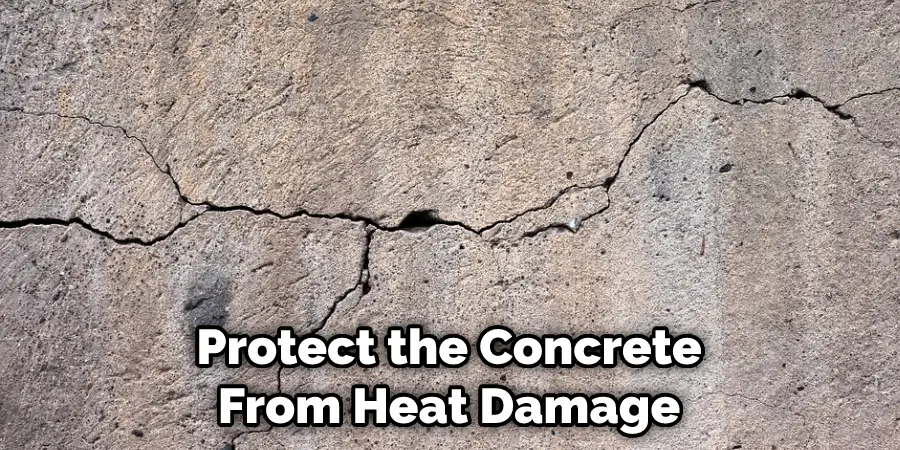
Step 2: Use Insulation Materials
Using insulation materials such as fire bricks, heat mats, or fire blankets to cover the concrete can help protect it from heat exposure. Additionally, layering construction-grade cement boards or insulating panels between the fire pit and the concrete can also help maintain a safe temperature that is not too extreme for the concrete.
Step 3: Monitor Temperatures
When burning wood or coal in a fire pit, it is important to ensure that the temperatures created do not exceed the melting point of the surrounding concrete. If the temperature around the fire pit does become too intense, use a thermometer to track and monitor temperatures and move the fire pit away from the concrete if needed.
Step 4: Use Heat Shields
If you cannot move your fire pit away from any existing concrete, investing in a heat shield is another option for protecting the concrete from too much exposure. Heat shields can be made of various materials, such as steel or aluminum, and help deflect some heat away from the concrete.
Step 5: Cover with a Fire Pit Mat
Finally, investing in a fire pit mat can go a long way in protecting your concrete from intense heat exposure. Fire pit mats are designed to keep sparks and embers from damaging any nearby surfaces as well as keeping temperatures around the fire pit at a safe level.
By following these steps, you can protect your concrete from the intense heat generated by a fire pit. Taking proper precautions is key in protecting your concrete and nearby surfaces from damage or deterioration over time.
Tips for How to Protect Concrete From Fire Pit
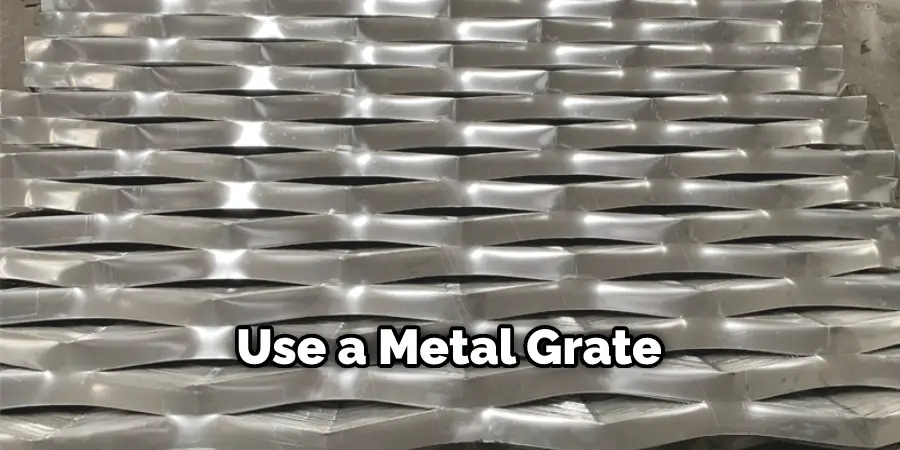
- Ensure that the surface your fire pit is placed on will not catch fire. A concrete or brick patio is ideal for this purpose.
- Whenever possible, avoid using gasoline, kerosene, lighter fluid, or any other flammable liquid to start a fire in your fire pit.
- Use a metal grate over the top of the fire pit to contain sparks and burning embers from flying out and coming into contact with nearby surfaces.
- Make sure to check the fire regularly to make sure that it doesn’t become too large or put off excessive heat.
- If you leave the area for any amount of time, always use a metal spark guard around the fire pit to keep embers and sparks contained.
- Make sure to keep your fire pit at least 3-4 feet away from any nearby structures and furniture in order to reduce the risk of a fire spreading.
- Never pour gasoline, kerosene, lighter fluid, or any other flammable liquid on an active fire.
- Before going to bed or leaving your property, make sure to douse the fire with water and stir the ashes to make sure that all burning embers have been extinguished.
By following these simple tips and taking the necessary precautions, you can keep your concrete safe from fire pits and enjoy the benefits of outdoor fires without any worries.
How Often Should You Inspect the Area Around Your Fire Pit to Ensure It is Safe?
Inspect the area around your fire pit on a regular basis to help ensure it is safe. Make sure the ground surrounding the fire pit is clear of debris, such as leaves, twigs and fallen branches that could catch fire from sparks or embers. Also, look for any signs of damage to the concrete, such as cracks or crumbling edges.
Regularly check the fire pit for loose pieces of metal or anything else that could become a hazard. Also, always have a bucket of water and a fire extinguisher nearby in case of an emergency. Be sure to dispose of the ashes properly and never leave a fire unattended.
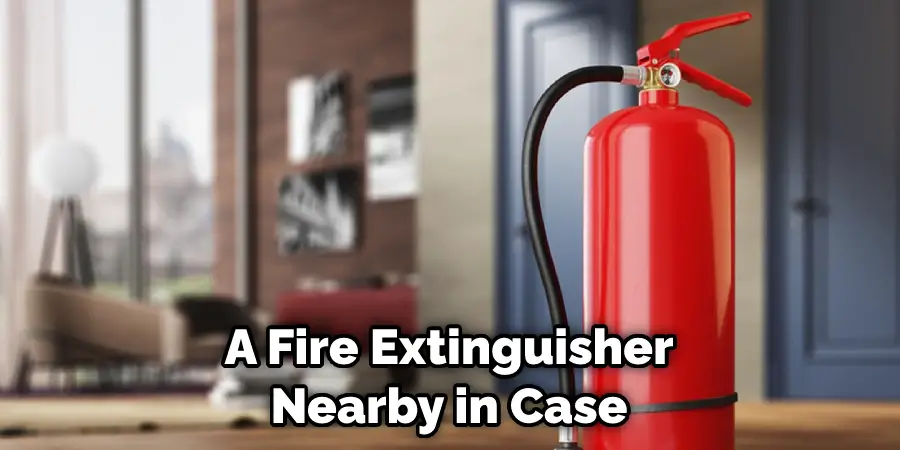
By following these safety precautions, you can help protect your concrete from the dangers of a fire pit.
How Can You Protect Your Concrete Patio or Deck From Heat Generated by a Fire Pit?
If you have a patio or deck made of concrete, it is important to understand how to protect the material from high temperatures generated by a fire pit. If not properly protected, the intense heat can cause damage ranging from discoloration to cracking and warping. Luckily, there are several steps that you can take to protect your concrete patio or deck from a fire pit.
The first step is to create a barrier between the heat of the fire and your concrete patio or deck. This can be done with non-combustible materials such as brick, slate, stone, pavers, or ceramic tiles. These materials will absorb some of the intense heat and decrease how much reaches your concrete surface.
Additionally, ensure the barrier is placed far away from the firepit to ensure that it does not become an issue.
How Do You Properly Maintain Your Fire Pit?
- Place the fire pit on a flat, solid surface such as concrete or brick pavers. If you plan to place it directly onto grass or dirt, line the area with bricks or rocks first and then place the fire pit on top of that.
- Cover the entire surface area around your fire pit with an appropriate heat-resistant material such as fire glass, refractory cement, or lava rocks. This will protect your concrete from the direct heat of the flames and prevent it from cracking or becoming discolored.
- When you are done using your fire pit, ensure that all embers and ashes have been extinguished and cooled down before covering it up with its lid or another heat-resistant material.
- Make sure to clean your fire pit regularly and remove any accumulated soot, ash, or other debris from its interior. This will help keep the fire pit in good condition and prevent it from damaging the concrete beneath it.
- Finally, use a high-temperature sealant to protect the concrete from the heat generated by your fire pit. This sealant should be applied in a thin, even layer and allowed to dry before you use your fire pit again.
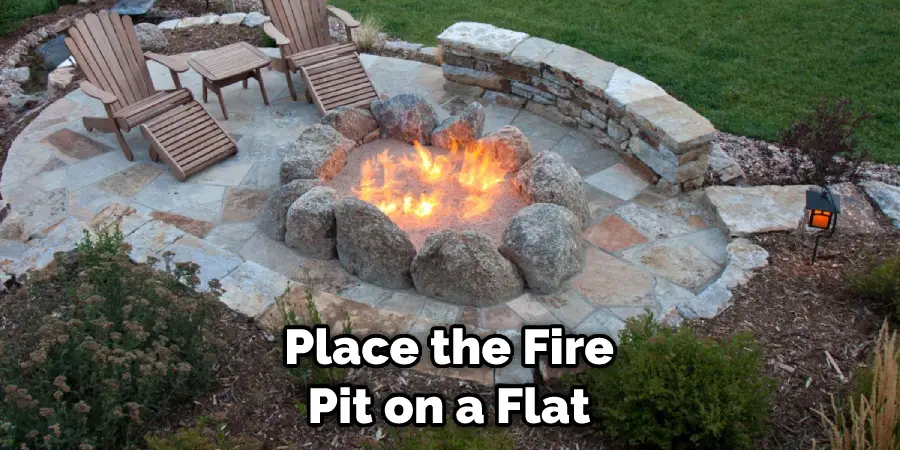
By following these steps, you can rest assured that your concrete will be properly protected from the heat of your fire pit. With proper maintenance and care, you can enjoy a safe and beautiful outdoor space for years to come.
Conclusion
In conclusion, protecting concrete from a fire pit is an important safety measure to prevent any damage. The best approach is to ensure that the fire pit is far away from any potential concrete surfaces and that there are adequate barriers between them.
Additionally, you should check local regulations regarding building codes and fire safety standards before proceeding with the construction of the fire pit. Finally, if your fire pit is already in place, it is important to inspect it regularly for any signs of distress or damage. I hope reading this post has helped you learn how to protect concrete from fire pit. Make sure the safety precautions are carried out in the order listed.
You Can Check It Out To Hook Up Propane Tank to Fire Pit

